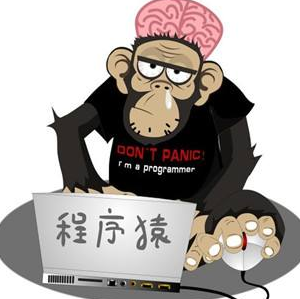问
2D点数据集中的OpenCV模板
我正在徘徊在2D点阵列中检测"数字"的最佳方法.
在这个例子中,我有两个'模板'.图1是模板,图2是模板.这些模板中的每一个仅作为具有x,y坐标的点的矢量存在.
假设我们有第三个带有x,y坐标的矢量矢量
找出并隔离与第三个阵列中的前两个阵列之一匹配的点的最佳方法是什么.(包括缩放,旋转)?

我一直在尝试最近的neigbours(FlannBasedMatcehr)甚至SVM实现,但它似乎没有给我任何结果,模板匹配似乎也不是要走的路,我想.我不是处理图像而只是处理内存中的2D点...
特别是因为输入矢量总是具有比要与之比较的原始数据集更多的点.
它需要做的就是在数组中找到与模板匹配的点.
我不是机器学习或opencv的"专家".我想我从一开始就忽略了一些东西......
非常感谢您的帮助/建议.
1 个回答
-
只是为了好玩,我试过这个:
选择点数据集的两个点并计算将前两个模式点映射到这些点的转换.
测试是否可以在数据集中找到所有变换的模式点.
这种方法非常幼稚,并且具有
O(m*n²)n个数据点和大小为m(点)的单个模式的复杂性.对于一些最近邻搜索方法,这种复杂性可能会增加.因此,您必须考虑它是否对您的应用程序来说效率不高.一些改进可能包括一些启发式,不能选择所有n²点的组合,但是,你需要最大模式缩放的背景信息或类似的东西.
为了评估,我首先创建了一个模式:

然后我创建随机点并在其中的某处添加模式(缩放,旋转和翻译):

在一些计算之后,该方法识别模式.红线显示转换计算的选定点.

这是代码:
// draw a set of points on a given destination image void drawPoints(cv::Mat & image, std::vector<cv::Point2f> points, cv::Scalar color = cv::Scalar(255,255,255), float size=10) { for(unsigned int i=0; i<points.size(); ++i) { cv::circle(image, points[i], 0, color, size); } } // assumes a 2x3 (affine) transformation (CV_32FC1). does not change the input points std::vector<cv::Point2f> applyTransformation(std::vector<cv::Point2f> points, cv::Mat transformation) { for(unsigned int i=0; i<points.size(); ++i) { const cv::Point2f tmp = points[i]; points[i].x = tmp.x * transformation.at<float>(0,0) + tmp.y * transformation.at<float>(0,1) + transformation.at<float>(0,2) ; points[i].y = tmp.x * transformation.at<float>(1,0) + tmp.y * transformation.at<float>(1,1) + transformation.at<float>(1,2) ; } return points; } const float PI = 3.14159265359; // similarity transformation uses same scaling along both axes, rotation and a translation part cv::Mat composeSimilarityTransformation(float s, float r, float tx, float ty) { cv::Mat transformation = cv::Mat::zeros(2,3,CV_32FC1); // compute rotation matrix and scale entries float rRad = PI*r/180.0f; transformation.at<float>(0,0) = s*cosf(rRad); transformation.at<float>(0,1) = s*sinf(rRad); transformation.at<float>(1,0) = -s*sinf(rRad); transformation.at<float>(1,1) = s*cosf(rRad); // translation transformation.at<float>(0,2) = tx; transformation.at<float>(1,2) = ty; return transformation; } // create random points std::vector<cv::Point2f> createPointSet(cv::Size2i imageSize, std::vector<cv::Point2f> pointPattern, unsigned int nRandomDots = 50) { // subtract center of gravity to allow more intuitive rotation cv::Point2f centerOfGravity(0,0); for(unsigned int i=0; i<pointPattern.size(); ++i) { centerOfGravity.x += pointPattern[i].x; centerOfGravity.y += pointPattern[i].y; } centerOfGravity.x /= (float)pointPattern.size(); centerOfGravity.y /= (float)pointPattern.size(); pointPattern = applyTransformation(pointPattern, composeSimilarityTransformation(1,0,-centerOfGravity.x, -centerOfGravity.y)); // create random points //unsigned int nRandomDots = 0; std::vector<cv::Point2f> pointset; srand (time(NULL)); for(unsigned int i =0; i<nRandomDots; ++i) { pointset.push_back( cv::Point2f(rand()%imageSize.width, rand()%imageSize.height) ); } cv::Mat image = cv::Mat::ones(imageSize,CV_8UC3); image = cv::Scalar(255,255,255); drawPoints(image, pointset, cv::Scalar(0,0,0)); cv::namedWindow("pointset"); cv::imshow("pointset", image); // add point pattern to a random location float scaleFactor = rand()%30 + 10.0f; float translationX = rand()%(imageSize.width/2)+ imageSize.width/4; float translationY = rand()%(imageSize.height/2)+ imageSize.height/4; float rotationAngle = rand()%360; std::cout << "s: " << scaleFactor << " r: " << rotationAngle << " t: " << translationX << "/" << translationY << std::endl; std::vector<cv::Point2f> transformedPattern = applyTransformation(pointPattern,composeSimilarityTransformation(scaleFactor,rotationAngle,translationX,translationY)); //std::vector<cv::Point2f> transformedPattern = applyTransformation(pointPattern,trans); drawPoints(image, transformedPattern, cv::Scalar(0,0,0)); drawPoints(image, transformedPattern, cv::Scalar(0,255,0),3); cv::imwrite("dataPoints.png", image); cv::namedWindow("pointset + pattern"); cv::imshow("pointset + pattern", image); for(unsigned int i=0; i<transformedPattern.size(); ++i) pointset.push_back(transformedPattern[i]); return pointset; } void programDetectPointPattern() { cv::Size2i imageSize(640,480); // create a point pattern, this can be in any scale and any relative location std::vector<cv::Point2f> pointPattern; pointPattern.push_back(cv::Point2f(0,0)); pointPattern.push_back(cv::Point2f(2,0)); pointPattern.push_back(cv::Point2f(4,0)); pointPattern.push_back(cv::Point2f(1,2)); pointPattern.push_back(cv::Point2f(3,2)); pointPattern.push_back(cv::Point2f(2,4)); // transform the pattern so it can be drawn cv::Mat trans = cv::Mat::ones(2,3,CV_32FC1); trans.at<float>(0,0) = 20.0f; // scale x trans.at<float>(1,1) = 20.0f; // scale y trans.at<float>(0,2) = 20.0f; // translation x trans.at<float>(1,2) = 20.0f; // translation y // draw the pattern cv::Mat drawnPattern = cv::Mat::ones(cv::Size2i(128,128),CV_8U); drawnPattern *= 255; drawPoints(drawnPattern,applyTransformation(pointPattern, trans), cv::Scalar(0),5); // display and save pattern cv::imwrite("patternToDetect.png", drawnPattern); cv::namedWindow("pattern"); cv::imshow("pattern", drawnPattern); // draw the points and the included pattern std::vector<cv::Point2f> pointset = createPointSet(imageSize, pointPattern); cv::Mat image = cv::Mat(imageSize, CV_8UC3); image = cv::Scalar(255,255,255); drawPoints(image,pointset, cv::Scalar(0,0,0)); // normally we would have to use some nearest neighbor distance computation, but to make it easier here, // we create a small area around every point, which allows to test for point existence in a small neighborhood very efficiently (for small images) // in the real application this "inlier" check should be performed by k-nearest neighbor search and threshold the distance, // efficiently evaluated by a kd-tree cv::Mat pointImage = cv::Mat::zeros(imageSize,CV_8U); float maxDist = 3.0f; // how exact must the pattern be recognized, can there be some "noise" in the position of the data points? drawPoints(pointImage, pointset, cv::Scalar(255),maxDist); cv::namedWindow("pointImage"); cv::imshow("pointImage", pointImage); // choose two points from the pattern (can be arbitrary so just take the first two) cv::Point2f referencePoint1 = pointPattern[0]; cv::Point2f referencePoint2 = pointPattern[1]; cv::Point2f diff1; // difference vector diff1.x = referencePoint2.x - referencePoint1.x; diff1.y = referencePoint2.y - referencePoint1.y; float referenceLength = sqrt(diff1.x*diff1.x + diff1.y*diff1.y); diff1.x = diff1.x/referenceLength; diff1.y = diff1.y/referenceLength; std::cout << "reference: " << std::endl; std::cout << referencePoint1 << std::endl; // now try to find the pattern for(unsigned int j=0; j<pointset.size(); ++j) { cv::Point2f targetPoint1 = pointset[j]; for(unsigned int i=0; i<pointset.size(); ++i) { cv::Point2f targetPoint2 = pointset[i]; cv::Point2f diff2; diff2.x = targetPoint2.x - targetPoint1.x; diff2.y = targetPoint2.y - targetPoint1.y; float targetLength = sqrt(diff2.x*diff2.x + diff2.y*diff2.y); diff2.x = diff2.x/targetLength; diff2.y = diff2.y/targetLength; // with nearest-neighborhood search this line will be similar or the maximal neighbor distance must be relative to targetLength! if(targetLength < maxDist) continue; // scale: float s = targetLength/referenceLength; // rotation: float r = -180.0f/PI*(atan2(diff2.y,diff2.x) + atan2(diff1.y,diff1.x)); // scale and rotate the reference point to compute the translation needed std::vector<cv::Point2f> origin; origin.push_back(referencePoint1); origin = applyTransformation(origin, composeSimilarityTransformation(s,r,0,0)); // compute the translation which maps the two reference points on the two target points float tx = targetPoint1.x - origin[0].x; float ty = targetPoint1.y - origin[0].y; std::vector<cv::Point2f> transformedPattern = applyTransformation(pointPattern,composeSimilarityTransformation(s,r,tx,ty)); // now test if all transformed pattern points can be found in the dataset bool found = true; for(unsigned int i=0; i<transformedPattern.size(); ++i) { cv::Point2f curr = transformedPattern[i]; // here we check whether there is a point drawn in the image. If you have no image you will have to perform a nearest neighbor search. // this can be done with a balanced kd-tree in O(log n) time // building such a balanced kd-tree has to be done once for the whole dataset and needs O(n*(log n)) afair if((curr.x >= 0)&&(curr.x <= pointImage.cols-1)&&(curr.y>=0)&&(curr.y <= pointImage.rows-1)) { if(pointImage.at<unsigned char>(curr.y, curr.x) == 0) found = false; // if working with kd-tree: if nearest neighbor distance > maxDist => found = false; } else found = false; } if(found) { std::cout << composeSimilarityTransformation(s,r,tx,ty) << std::endl; cv::Mat currentIteration; image.copyTo(currentIteration); cv::circle(currentIteration,targetPoint1,5, cv::Scalar(255,0,0),1); cv::circle(currentIteration,targetPoint2,5, cv::Scalar(255,0,255),1); cv::line(currentIteration,targetPoint1,targetPoint2,cv::Scalar(0,0,255)); drawPoints(currentIteration, transformedPattern, cv::Scalar(0,0,255),4); cv::imwrite("detectedPattern.png", currentIteration); cv::namedWindow("iteration"); cv::imshow("iteration", currentIteration); cv::waitKey(-1); } } } }2023-02-09 18:39 回答 金里昂钢琴艺术中心
金里昂钢琴艺术中心
撰写答案
今天,你开发时遇到什么问题呢?
立即提问
 京公网安备 11010802041100号
京公网安备 11010802041100号